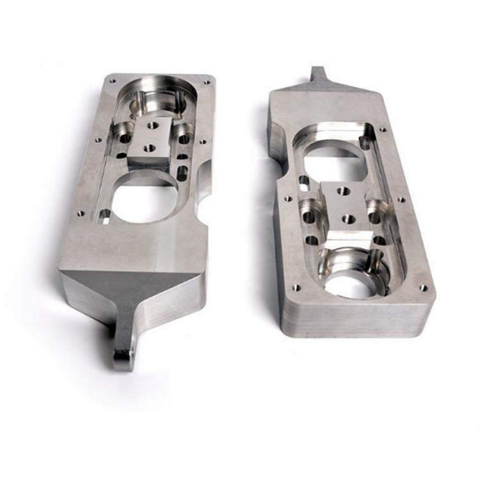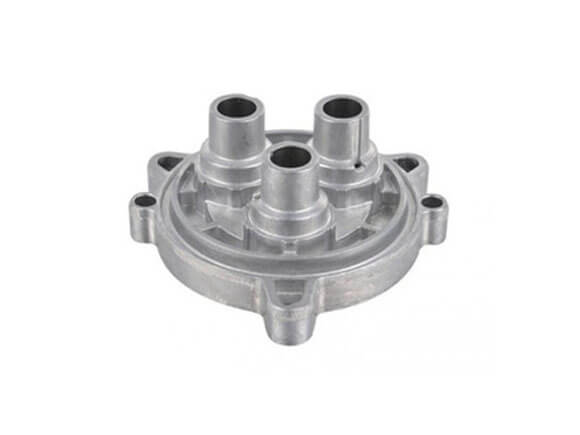Ways to Improve Your aluminum casting Process for Better Results
Wiki Article
Aluminum Casting Explained: Trick Truths and Insights for Market Professionals
Aluminum casting offers as a vital process in modern-day manufacturing, shaping elements throughout numerous fields. Its varied methods, such as sand and die casting, accommodate different production requirements. The unique residential properties of aluminum alloys enhance their applicability, yet tests stay in keeping high quality and efficiency. Recognizing these facets is important for sector professionals. What are the most current advancements and best techniques that can further optimize this procedure?Review of Aluminum Casting Processes

Crucial element of aluminum casting processes consist of the prep work of molds, which might be made from sand, metal, or ceramic products, relying on the meant use. Additionally, temperature level control is crucial to guarantee appropriate melting and solidification of aluminum.
The casting procedure enables complex styles and can accomplish high degrees of dimensional accuracy. When cooled down, the spreadings may go through finishing procedures such as machining or surface therapy to meet certain efficiency requirements. Generally, aluminum casting acts as a flexible production method, efficiently meeting the diverse needs of various industries.
Kinds of Aluminum Casting Techniques
In the domain name of aluminum casting, various techniques are employed to achieve various results. Sand casting strategies offer versatility and cost-effectiveness for complex forms, while die casting processes supply high accuracy and efficiency for mass manufacturing. Comprehending these approaches is important for choosing the ideal method based on task demands.Sand Casting Techniques
Sand casting strategies stand for a basic method in aluminum casting, where sand is made use of as a mold material to form molten steel. This procedure includes developing a pattern from the desired component, which is then placed in a sand combination to form a mold. The sand is compressed around the pattern, and after removal, it develops a cavity in the shape of the component. Molten aluminum is poured right into this tooth cavity, permitting it to cool and solidify. One significant benefit of sand casting is its flexibility; it can fit complicated shapes and big parts. Furthermore, the products made use of are relatively affordable, making it an obtainable option for different manufacturing applications in the aluminum sector.Die Casting Processes
Die casting processes are a famous technique for shaping aluminum components, making use of high-pressure techniques to force molten metal right into specifically crafted mold and mildews. This process is specifically preferred for its capacity to create complicated forms with limited resistances and a smooth coating. There are 2 key sorts of die casting: hot chamber and chilly chamber. Warm chamber die casting appropriates for metals with low melting points, enabling faster production rates. On the other hand, chilly chamber die casting is excellent for greater melting factor steels, needing a different melting heater. Both approaches boost effectiveness and minimize material waste, making them important in automobile, aerospace, and consumer items industries. Understanding these procedures assists experts choose the most ideal strategy for their details applications.Product Residence of Aluminum Alloys

Toughness and Durability
Stamina and longevity are crucial features of aluminum alloys that make them suitable for different casting applications. These products show a beneficial strength-to-weight proportion, permitting for the creation of lightweight yet robust parts. When it come to tensile stamina, details aluminum alloys can be crafted to withstand significant tons without warping. This property is especially crucial in sectors such as aerospace and auto, where efficiency and safety and security are paramount. Additionally, aluminum alloys frequently keep their mechanical residential properties under varied temperature level problems, making certain regular efficiency. The innate ductility of these alloys likewise enables effective shaping during the casting process, making it much easier to create intricate geometries. In general, the strength and durability of aluminum alloys add significantly to their prevalent usage in innovative applications.Deterioration Resistance Characteristics
While aluminum alloys are prized for their strength and light-weight properties, their corrosion resistance is another crucial attribute that boosts their viability for numerous applications. Aluminum normally develops a protective oxide layer when exposed to moisture, which aids to avoid additional oxidation. This fundamental property makes aluminum alloys specifically important in environments vulnerable to deterioration, such as commercial and marine setups. Furthermore, various alloy make-ups can influence resistance degrees, with specific alloys specifically crafted to improve this particular. Treatments like plating can even more boost rust resistance by enlarging the oxide layer. Subsequently, understanding the deterioration resistance of aluminum alloys is essential for sector professionals when picking materials for tasks requiring longevity and durability in click here for more challenging settings.Advantages of Aluminum Casting in Production
Aluminum casting deals various benefits in manufacturing, making it a recommended option for various sectors. One significant advantage is its lightweight nature, which adds to lowered transport costs and enhanced energy performance in end items. Aluminum's superb thermal and electric conductivity improves capability in applications calling for warmth dissipation or electric transmission.The product's capacity to be cast right into detailed forms enables for style flexibility, decreasing the requirement for extra machining processes. Furthermore, aluminum casting exhibits superior rust resistance, bring about longer item life-spans and reduced maintenance expenses.

Common Applications of Aluminum Castings
The adaptability of aluminum casting allows its widespread use throughout different markets. Common applications include auto parts, where light-weight and corrosion-resistant parts, such as engine blocks and transmission housings, enhance automobile efficiency. In the aerospace industry, aluminum spreadings are made use of for structural components, using toughness without adding significant weight.
Furthermore, the electric industry take advantage of aluminum castings in producing units and heat sinks, where thermal conductivity is vital. The durable goods industry likewise integrates aluminum spreadings in items like pots and pans, furniture, and decorative items, combining appearances with capability.
The building and construction industry uses aluminum spreadings for building elements, window structures, and components, which give longevity and layout versatility. Generally, the diverse applications of aluminum castings emphasize their relevance in contemporary production, adding to improvements in effectiveness and product layout across multiple areas.
Advancements and Technological Developments
As industries remain to progress, developments in aluminum casting technology are changing production procedures and item capabilities. Innovations in 3D printing and additive production have enabled the development of complex geometries that were formerly impossible to attain with standard approaches. These modern technologies permit fast prototyping, reducing preparations and prices.In addition, renovations in mold and mildew layout and materials have boosted the casting process by raising efficiency and decreasing waste. The integration of clever manufacturing methods, such as IoT devices and real-time information analytics, allows for better tracking and optimization of production criteria, leading to better outcomes.
Furthermore, advancements in aluminum alloys provide enhanced stamina, deterioration resistance, and lightweight residential properties, satisfying the growing needs in aerospace and automobile markets. Jointly, these innovations are not only enhancing efficiency but also satisfying the extensive criteria of modern-day engineering applications.
Best Practices for High Quality Control in Aluminum Casting
Making certain top quality outcomes in aluminum casting needs adherence to finest methods that include different stages of the production process. Thorough product assessment is necessary to confirm the high quality of aluminum alloys used, as contaminations can substantially influence the final product. Executing accurate melting and pouring strategies lessens flaws; maintaining ideal temperature levels stops oxidation and promotes uniformity.Mold and mildew design plays an essential function; using computer-aided layout (CAD) can enhance precision and minimize human mistake. Regular monitoring of the cooling procedure is important to stay clear of warping and shrinkage. Furthermore, utilizing non-destructive screening approaches, such as ultrasonic or X-ray assessments, assists identify interior flaws without harming the components.
Establishing a feedback loophole with drivers and engineers cultivates continuous enhancement, making sure that quality control steps develop together with technological improvements. By adhering to these ideal techniques, manufacturers can boost the reliability and performance of aluminum castings.
Frequently Asked Questions
more tips hereWhat Are the Environmental Impacts of Aluminum Casting?
The ecological influences of aluminum casting consist of significant energy intake, greenhouse gas emissions, and prospective water pollution from factory operations. Additionally, bauxite mining for aluminum ore can cause environment devastation and dirt destruction.Just How Does Aluminum Casting Contrast to Various Other Steel Casting Processes?
Aluminum casting commonly provides benefits in light-weight parts and deterioration resistance contrasted to various other procedures, such as iron or steel casting, which might supply higher stamina but lead to much heavier and much less corrosion-resistant products. - Precision aluminum castingWhat Are Common Defects in Aluminum Castings and Their Reasons?
Usual flaws in aluminum spreadings consist of porosity, shrinkage, and inclusions. Causes often stem from inappropriate putting methods, insufficient mold layout, or contamination of the liquified metal, affecting the last product's integrity and efficiency.What Security Safety Measures Should Be Taken Throughout Aluminum Casting?
Throughout aluminum casting, vital safety preventative measures include using protective equipment, making sure appropriate air flow, preserving a clean work space, managing molten steel with care, and following well-known Visit Website procedures to minimize threats of burns, inhalation threats, and mishaps.How Can I Enhance the Effectiveness of My Aluminum Casting Operations?
To improve performance in aluminum casting operations, one should maximize mold style, streamline product handling, use automated processes, perform routine upkeep on equipment, and purchase employee training to improve abilities and efficiency.Numerous methods exist, aluminum casting incorporates a number of key processes that cater to various applications and requirements. Trick elements of aluminum casting procedures include the prep work of molds, which might be made from sand, metal, or ceramic products, depending on the planned use. Sand casting methods stand for a basic method in aluminum casting, where sand is utilized as a mold and mildew product to shape molten steel. As sectors continue to develop, developments in aluminum casting modern technology are transforming production procedures and product abilities. Making sure premium outcomes in aluminum casting requires adherence to finest techniques that encompass numerous phases of the manufacturing process.
Report this wiki page